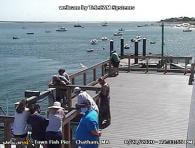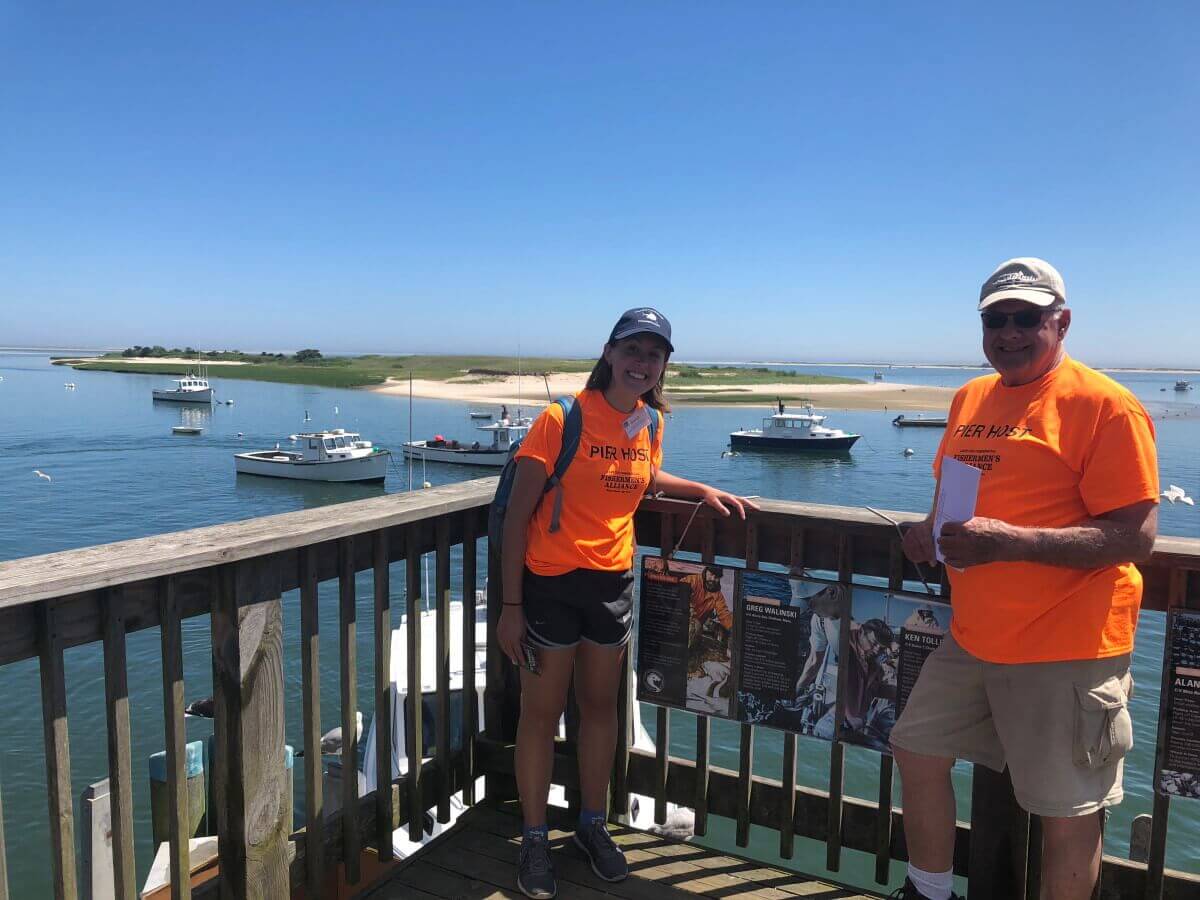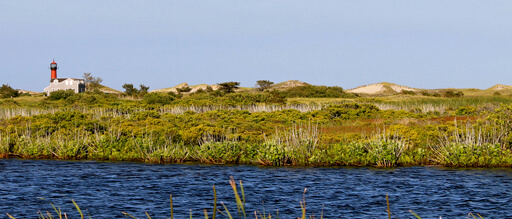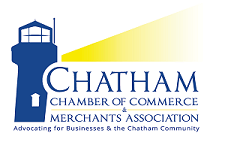Things to See in Chatham MA


Chatham Fish Pier
The Chatham Fish Pier, at the corner of Shore Road and Barcliff Avenue on Aunt Lydia's Cove at 54 Barcliff Road Extension, is a constant source of interest to our summer visitors. The members of the fishing fleet make their run each suitable day to the fishing grounds from 3 to 100 miles off Chatham. Their catch consists of haddock, cod, flounder, lobster, pollock, dogfish and halibut. The one-day fresh fish is placed in ice and transported in refrigerated trucks to the New York, Boston, New Bedford and local markets, reaching there less than 24 hours from the time it is taken from the ocean. The boats start returning to the pier shortly after noon, depending upon the tide. You may watch from the visitors balcony - be sure to bring your camera.
Please observe local traffic and parking regulations while at the Fish Pier. Parking in upper lot for visitors, lower lot by permit only.
Learn about the maritime history of Chatham while having a fisherman show you the ropes at the Chatham Fish Pier. On select days, there will be a Pier Host available to tell visitors about an industry that is vital to the Cape’s past, present, and future. For a schedule, please visit: http://www.capecodfishermen.org/pier-program
Fisherman's Monument
Several years ago a committee was formed from our community to recognize the Chatham fishing industry in our town. It was decided by this committee to plan and erect a monument to this unique industry at the Chatham Fish Pier. Following an international competition with about 100 entrants, the committee narrowed the selection to a final three which were submitted to all in our fishing community for a final selection. The winning choice was designed by Sig Purwin - an artist and sculptor from Woods Hole, MA. It was dedicated in June 1992. The monument, entitled The Provider, features a strong hand pulling a fishing net from the sea with multi-fish and shellfish indigenous to Chatham caught in the net.
Visit the monument at the Chatham Fish Pier. It shows our pride to our people in the fishing industry-always changing to remain the same - proud, independent, and providers to the world of the best seafood available from the Atlantic Ocean!


Cape Cod Commercial Hook Fishermen's Association (CCHFA) Pier Host Program
Our residents and summer visitors have long been known of the delightful physical characteristics of Chatham, such as the beaches, marsh and wetlands and meadows. Preservation of these resources is a benefit to our economy, our fisheries, wildlife and flora, a fact now recognized to a greater extent in the past few years by Federal, State and Local authorities.
Chatham is fortunate in having in addition to the Town Conservation Commission, a privately operated organization in the Chatham Conservation Foundation, Inc., (540 Main Street, Chatham, MA 02633), dedicated to the preservation of these valued areas. The Foundation, chartered in 1962, is in the hands of five year-round residents, as Trustees, Officers, and Executive Committee without salary.
Many gifts of wetlands and marshlands have been donated to this organization and others obtained by purchase. To date, more than 540 acres have been put into conservation so our residents and visitors may enjoy them. Walking trails are maintained in four areas. Please refer to the map on pages 12-13 for the starting points of the four trails described below.
A highlight of the Foundation's work in the field of education is their second publication, "A Beachcomber's Botany", 158 pages with 113 illustrations by Marcia Gaylord Norman, and text by Loren C. Petry, Professor Emeritus, Cornell University. It is a valuable guide to the interesting plant life in the marshes, along the shore and the upland. Copies are available at a nominal cost directly from the Foundation Headquarters (see Mayo House), across from the Information Booth, or at several bookstores and gift shops. Trail Guide
Chatham Lighthouse

You will find few spots on the entire East Coast of North America that can equal the view at The Light. Drive down Main Street to 37 Main Street the lighthouse and park for a spell. You will meet many of your friends. You will see many cars from nearly every state as you gaze over the majestic Atlantic. For a close-up view try the public telescopes. Nearby is the Coast Guard Station ready to answer many emergencies involving distressed mariners, fishermen, or summer folk with problems on the water. Please observe and obey the parking signs as posted there. This is a fine spot to view the well-known Breakthrough in North Beach. Lighthouse Tours are offered during the season and at First Night. Please visit the Events Calendar for schedule.
Conservation Trails
Trail #1: FROST FISH CREEK TRAIL - Orleans Road (Route 28) Acme Laundry area. North Chatham heading toward Orleans take left onto dirt road just after closed laundry, just before creek running under road. Trail proceeds west along creek and marsh. At end of trail you may take left, proceed approximately 45 feet and take path up ridge to return to parking area via ridge path. Ridge somewhat difficult walking, so you may retrace entry route. Woods, marsh, and field plant life. birds. 45 minutes to 1 hour, 16 acres.
Trail #2: BARCLAY PONDS TRAIL - Old Queen Anne Road and Training Field Road. Entrance to trail is at Yield Sign, 20 feet south of telephone pole #38 in intersection. Park in field (Crowell's Pit) north of entrance. Quiet, woodsy walk some up and down hill. Approximately 1/2 hour, 12 acres.
Trail #3: HONEYSUCKLE LAND, OFF STAGE HARBOR ROAD - Bottom of hill, left side of road are two short trails leading to the Old Ice Pond. Many water birds are generally seen in this area. Right side of road near telephone pole and along side of narrow stream, a short walk featuring white cedar trees. Also, leading to other trails in and around the Cedar Swamp, which is mostly owned by the Town of Chatham.
Trail #4: GEORGE RYDER ROAD, SOUTH TRAIL - Opposite West Chatham A&P and George Ryder Road, take George Ryder Road South to first right (Harold's Lane). Take first right off Harold's Lane (Ralph Street) onto short paved road ending in a dirt road. Entrance to walk is on your left. Ralph Street is the bog owner's entrance to his working cranberry bog. Please don't block entrance or neighbor's driveways. Woods, cranberry bogs, brackish marsh. Approx. 15 minutes, 2.5 acres.
Monomoy National Wildlife Refuge
Chatham is a mecca for bird enthusiasts. In autumn, Cape Cod is a veritable trap for birds of numerous species. Its temperate climate attracts many birds through the winter when most have winged south. The summer months see the migration at its height. Chatham, with access to the Monomoy Wilderness, affords an unexcelled opportunity to observe many species, both rare and common. Nearly every species recorded from New England has been seen at some time in this area.
The Monomoy National Wildlife Refuge provides a critical link in the chain of migratory waterfowl refuges along the Atlantic Flyway, providing and protecting nesting, feeding, and resting grounds for a known 285 species. The importance of this site to birds is reflected by its designation as both an Important Bird Area and as a regional site within the Western Shorebird Reserve Network. The refuge is also home to the endangered northeastern beach tiger beetle, a species that relies on wild, undisturbed beaches.
Monomoy National Wildlife Refuge consists of North Monomoy, South Monomoy, and Minimoy Island and a portion of Morris Island. You can access the Refuge by short boat trip (using a personal watercraft) from Chatham or visit the Refuge’s headquarters at 30 Wikis Way in Chatham to learn more about wildlife, habitat, history, and ongoing research efforts at Monomoy and to explore Morris Island trails on foot. Our Friends group maintains a visitor kiosk next to the parking lot and typically has someone there every day from 10:00 AM to 4:00 PM from Memorial Day to Labor Day. The Refuge Visitor Center will also be open based on staff/volunteer availability. Morris Island Loop Trail access is available from sunrise to sunset, every day, all year long. Surf fishing on Morris Island is permitted 24 hours a day.
The geography of the Refuge’s islands is constantly changing due to the erosion and deposition of sand within the barrier island system. Learn more about the Refuge’s changing shape over the last century by exploring this interactive map.
To reach the headquarters on Morris Island, take Route 6 east to Route 137 south to Route 28. A left turn takes you through downtown Chatham (about 3 miles.) Turn right at the stop sign, to the Chatham Lighthouse and Coast Guard Station. Take the first left after the lighthouse, then the first right. Follow signs to the Refuge along Morris Island Road to Tisquantum Road, then turn left onto Wikis Way.
While visiting the Refuge, please follow the following regulations in order to protect nesting, resting, and feeding wildlife:
Always remember to leave no trace: Pack in and pack out all of your trash and belongings.
Signs and fencing protect migratory birds while nesting. Please respect these signs and closed areas while walking, birding, and exploring.
On Morris Island, dogs on a short leash are permitted only between September 16 and April 30th, in order to protect birds during breeding and nesting season.
When visiting offshore islands:
See Public Use map for suggested landings and seasonal closure areas to protect nesting migratory birds. Closed Area signs represent up to date closures, please respect the closed areas behind these signs.
Please remember to leave no trace, pack-in and pack-out all of your belongings. Please leave beach tents, radios, grills, and ball sports at home in order to avoid attracting predators or disturbing wildlife.
Wheeled carts are prohibited within the Monomoy Wilderness, which extends to mean low water in all areas except Morris Island.
Dogs are not allowed on Monomoy’s offshore islands.
See Monomoy website for maps and more information: https://www.fws.gov/refuge/monomoy
Samuel de Champlain 1606 Voyage Commemoration Monument
Landing in what is now Chatham in 1606, Champlain, the French cartographer who played a key role in the exploration of North America, stayed two weeks before relations with the native Wampanoag nation deteriorated and a skirmish left four French and many more Monomoyicks (those natives living directly in this area) dead. A monument dedicated to Champlain is located on Champlain Road.
Parks and Playgrounds
The Park and Recreation Commission has jurisdiction over the several parks and playgrounds in Chatham. The charm of Kate Gould Park, near the center of town, is enhanced on Friday evenings during July and August when as many as 6,000 gather for concerts by the widely known Chatham Band. Chase Park, on Cross Street, adjoins the Grist Mill and also contains a bowling green, picnic tables and a comfort station. Adjoining the traffic rotary on Main Street is the William Nickerson Memorial Park. On the site of a former commercial building, the park was a joint effort of the town, the Chatham Improvement Association, and Friends of Trees.
Although it has a smaller footprint than the old Robert Leathers playground, the new metal and plastic playground includes just as many features and carries on the nautical theme of the old structure. Major components include the lighthouse, a boat, a fishing net and several ride-on fish. The play area is covered with woodchips and a path runs through the center to provide handicapped access.
